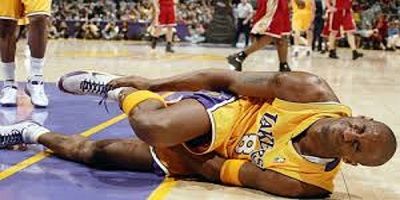Sports Injuries
Sports injuries are physical injuries that occur during exercise or while participating in a sport. They can range from minor to severe, and the type of injury often depends on the sport or activity. Understanding these injuries can help in prevention and proper treatment. Here’s a straightforward guide to some common types of sports injuries, with examples:
1. Strains
- What it is: A strain occurs when a muscle or tendon (the tissue that connects muscles to bones) is overstretched or torn.
- Common Examples: Hamstring strain (back of the thigh), groin strain.
2. Sprains
- What it is: A sprain happens when a ligament (the tissue that connects bones) is stretched or torn.
- Common Examples: Ankle sprain from twisting the foot, wrist sprain from a fall.
3. Knee Injuries
Types
- ACL Tear: Injury to the anterior cruciate ligament, one of the key ligaments that help stabilize the knee joint.
- Meniscus Tear: Damage to the cartilage that serves as a cushion between the thigh and shin bones.
- Common Examples: ACL tear from sudden stops or changes in direction, meniscus tear from twisting the knee.
4. Fractures
- What it is: A fracture is a break, usually in a bone.
- Common Examples: Arm fractures from falls in sports like skateboarding or snowboarding, stress fractures in runners.
5. Dislocations
- What it is: A dislocation occurs when the ends of bones are forced out of position.
- Common Examples: Shoulder dislocation from a heavy fall or impact, finger dislocation from ball sports.
6. Tendonitis
- What it is: Tendonitis is inflammation or irritation of a tendon.
- Common Examples: Tennis elbow (lateral epicondylitis), Achilles tendonitis.
7. Concussions
- What it is: A concussion is a type of brain injury caused by a bump, blow, or jolt to the head.
- Common Examples: Football players experiencing concussions from tackles, soccer players from heading the ball.
Prevention and Care
While injuries can sometimes be inevitable, there are steps you can take to minimize the risk:
- Warm-up properly before engaging in any sport.
- Use the right equipment such as helmets, pads, and proper shoes.
- Understand and follow the rules of the sport, which are often designed to keep everyone safe.
- Rest when you’re tired or in pain to prevent overuse injuries.
- Seek professional medical advice for any injury to get the correct diagnosis and treatment.
Conclusion
Sports injuries are common but understanding them can help in prevention and proper care. Always listen to your body and consult with healthcare professionals when needed. With the right precautions and responses, you can enjoy your favorite activities with less risk of injury.
